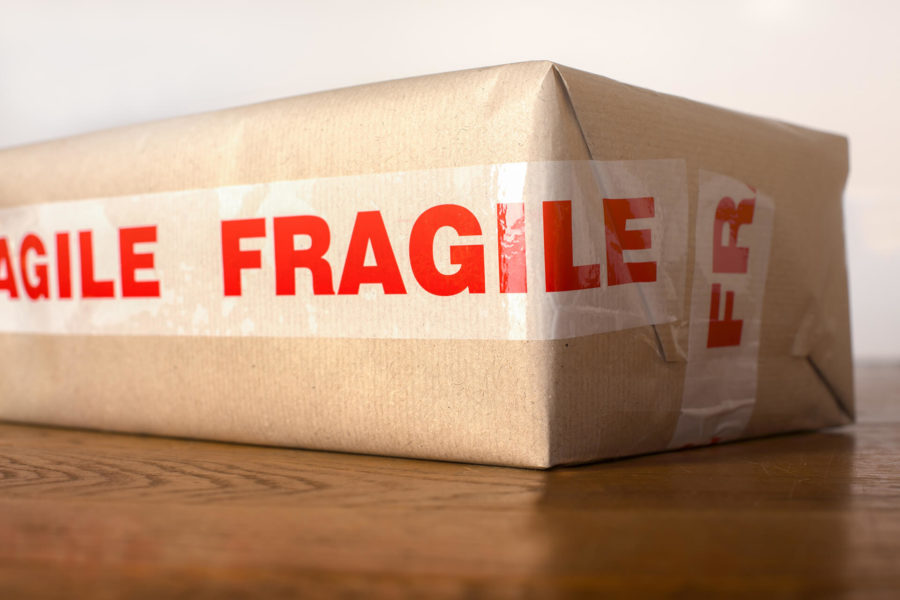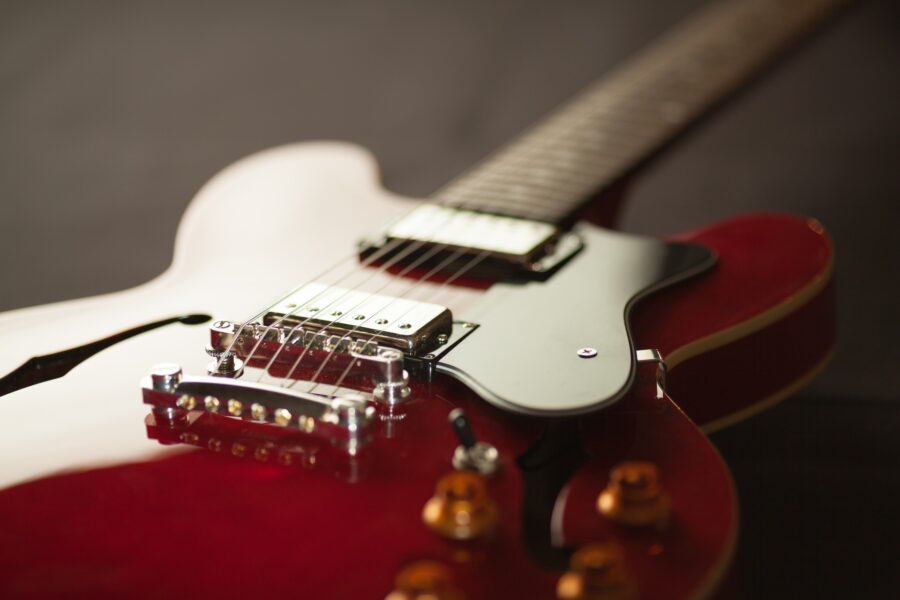

Protect Your Prized Possession: How to Pack a Guitar for Shipping
Posted in How-to on March 15, 2023
When moving cross-country, packing a guitar for shipping can be tricky. Long-distance movers have been doing this for years and know the proper techniques to ensure your instrument arrives safely at its destination. However, if you’re doing it on your own, here’s how to pack a guitar for shipping to protect your valuable possession during its long journey.
Packing a guitar for shipping requires some specific steps and moving hacks to ensure its safety. You’ll have to wrap it in packing materials like bubble wrap or foam sheets to prevent damage during transit. Organize your move, so you have the necessary supplies at your disposal, and check if you saved the guitar’s original packaging.
Everything You Need to Know About How to Pack a Guitar for Shipping
Packing a guitar for shipping, especially during long-distance moving, can be challenging. Guitars are fragile instruments, and improper packing can lead to costly damages. As you prepare your household inventory list, pay close attention to the details of packing your guitar.
Firstly, you must gather the necessary materials. Before you begin packing your guitar, make sure you have a hardshell guitar case or a quality gig bag, bubble wrap or packing foam, packing tape, cardboard or foam inserts, and a box that fits the guitar case or gig bag snugly.
Double-check that you haven’t forgotten anything by referring back to the inventory list and ensuring all components are safely and securely packed.
When packing a guitar, there may be some things you forget to do that can make a difference in ensuring its safety. For example, don’t forget to purchase insurance coverage for your guitar. This will provide peace of mind and financial protection in case of any damages during shipping.
Additionally, take photos of your guitar before packing it, documenting its condition. This will be helpful in case you need to file a claim for damages. Place a card with your name, address, and phone number inside the case in case the shipping label is damaged or lost.
Don’t Forget That Packing a Guitar for Shipping Includes the Right Materials
When making a checklist for moving to another state, make sure to include packing materials. When it comes to packing anything, using the right supplies is crucial. High-quality packing materials will provide the necessary protection from potential damage during transit. They can even facilitate move-out cleaning for some people.
Materials Needed for Packing a Guitar Safely
For you to have a stress-free move, you need the best possible packing materials. Here’s a recap of what you need to pack a guitar safely.
- A hardshell guitar case or quality gig bag – they offer the best protection during shipping and are specifically designed to protect the guitar from impacts and pressure.
- Bubble wrap or packing foam – they’re essential for providing additional cushioning and protection.
- Packing tape – this is necessary for securing the bubble wrap or packing foam around the guitar case or gig bag, as well as sealing the shipping box.
- Cardboard or foam inserts – these can be used to provide extra support and padding inside the guitar case or gig bag.
- Sturdy shipping box – a strong, high-quality shipping box is crucial for protecting your guitar.
- Packing peanuts or crumpled paper – these can be used to fill any remaining space in the shipping box, ensuring that the guitar is unable to move.
- Permanent markers or labels – they should be used to mark the shipping box with “Fragile” and “Handle with Care” warnings to help alert shipping handlers.
You Can’t Learn How to Pack a Guitar for Shipment if You Don’t Choose the Right Shipping Box
One of the most crucial elements in guitar shipping and creating a moving to-do list process is choosing the appropriate shipping box.
A well-fitted one reduces the risk of damage during transit by preventing the guitar from shifting within the package. An oversized box will require additional padding, while a box that is too small may not provide adequate protection.
Besides a proper fit, the shipping box or case should include structural strength. A sturdy box can withstand the rigors of shipping, protecting the guitar from impacts and weight placed on the package.
Many boxes are made of different packing materials – so which one to go for? If possible or available, choose a box made from heavy-duty, double-walled corrugated cardboard for optimal protection. Some companies offer specially designed guitar shipping boxes tailored to fit specific guitar types, providing an extra level of security.
Preparing the Guitar Case
When planning to save money to move, think of how much original packaging you can save. Throwing out a guitar’s original box isn’t recommended, but some people do it. In any case, if you’re considering what to keep, ensure your guitar’s box is one of the things.
Preparing a guitar case requires careful attention to detail to ensure the instrument is safe and secure during transport. First, check the interior of the case for any sharp edges or areas of wear that could damage the guitar. If necessary, consider using foam or fabric padding to protect against such damage.
Next, make sure the exterior of the case is in good condition. It should be free of cracks and scratches, and all clasps should close securely. A well-maintained case will provide a sturdy barrier against bumps and jolts that could otherwise damage your guitar while traveling.
How to Ship an Acoustic Guitar? Disassemble It Before Moving Cross Country
Shipping an acoustic guitar cross-country requires following some packing strategies. When we try to package fragile items of any sort, disassembling is a good idea – if available. Disassembling your guitar can minimize the risk of damage during transit.
Follow these steps for a successful shipping experience:
- Gradually slacken the strings to reduce tension on the neck. Remove them completely or leave them loosely coiled around the tuning pegs.
- Carefully remove the pickguard, truss rod cover, and strap buttons if they are easily detachable. Store these small parts in a labeled ziplock bag to avoid misplacement.
- Individually wrap the guitar’s body, neck, and headstock with bubble wrap or soft padding to provide adequate cushioning. Secure the padding with packing tape, ensuring it doesn’t leave residue on the guitar.
- Fill any empty spaces in the case with packing peanuts, crumpled newspaper, or additional padding to avoid movement and provide extra protection.
- Place the hardshell case inside a sturdy, double-walled cardboard box with ample padding on all sides. This extra layer offers added protection against impacts and punctures during shipping.
If you find your guitar’s sound and strings lacking after shipping, learn from the video below how to do some routine repairs on it. It’ll save you money and help you understand your instrument better.
Place Protective Padding Inside the Box to Cushion Your Guitar During Transit
When you learn how to pack fragile items, you’ll know how to pack a guitar for shipping. The essential things for packing something breakable include soft, cushiony materials and sturdy boxes or other containers. Here’s how to secure your guitar once it’s inside the case and the box.
Fill any remaining gaps between the guitar case and the box with more padding. This step is crucial in preventing movement and providing additional protection. Securely close the box using strong packing tape. Reinforce the seams and edges to prevent the box from opening during transit.
Finally, clearly label the box with the shipping and return addresses, and add any necessary shipping labels, such as “Fragile” or “Handle with Care.” Remember, investing time and effort to prep your guitar for shipment can guarantee smooth, stress-free delivery.
Which Materials Should You Use? Bubble Wrap and Foam Padding Always Helps
Bubble wrap and packing paper are the kings of moving safely and with convenience. Cross-country moving services are usually made all the better because of these two wrapping materials, so cross-country movers have them at all times. This is simply a nudge for you to hire professionals rather than attempt to fund and do everything on your own.
Foam padding additionally cushions any awkward blows, including big bumps in the road. Hopefully, nothing of the sort would happen during transit, but it’s always better to be safe than sorry. Packing peanuts are also made of foam, so they work just as well in this situation.
Whatever you do, ensure there’s soft padding to encapsulate the guitar and keep it intact.

Here’s How to Package a Guitar for Shipping by Properly Sealing and Labeling the Package
Shipping a guitar requires proper packaging to ensure its safe arrival. By now, you know you need to prepare the guitar, use a sturdy, appropriately-sized box, and use a layer of padding or bubble wrap at the bottom. If using a cardboard box around the case, you should also remember to reinforce the edges and corners with tape for added strength.
Once you layer the box and secure the contents, how will you know if you did everything in your power to ship your belongings out of state? The best way to know is if there are relocation labels added to each package, including the guitar. This will make anything easier during the move.
Write the recipient’s name, address, and contact information on a label or directly on the box. Include your return address and contact information. Write “fragile” and “handle with care” in bold letters on multiple sides of the box to alert handlers of its delicate contents.
If using a shipping service that provides labels, securely attach them to the package, ensuring they are easily visible and free from creases or damage. Consider purchasing shipping insurance, especially for valuable instruments. This protects in case of loss or damage during transit.

Tips for Packing Specific Types of Guitars
When you start doing relocation inventory, take all the small parts into account. That includes the parts that you remove or package separately for a guitar. But is it the same to pack an acoustic, electric, and classical guitar? Here’s what you need for each type.
How to Pack an Acoustic Guitar for Long-Distance Moving
Acoustic guitars are sensitive instruments that require careful packing for long-distance shipping. Follow these steps:
- Loosen the strings to relieve tension on the neck,
- Protect the headstock, neck, and body with bubble wrap or padding – avoid cheap moving supplies that don’t provide enough cushioning,
- Use a hardshell case designed for acoustic guitars or a sturdy, double-walled cardboard box,
- Fill any empty spaces in the case or box with packing materials,
- Seal and label the package, marking it as “Fragile” and “Handle with Care,”
- Opt for a reliable carrier and purchase shipping insurance.
Packing an Electric Guitar Isn't So Complicated
Electric guitars are generally more durable than acoustic guitars, but proper packing is still crucial. Here’s how:
- Loosen the strings and remove any detachable components,
- Individually wrap the body and neck with bubble wrap or padding,
- Use a hardshell case specific to electric guitars or a sturdy cardboard box,
- Fill any empty spaces with packing materials to prevent movement,
- Seal and label the package accordingly.
Pay Attention to Packing a Classic Guitar
Classical guitars are delicate and require extra care when packing, although the process is identical to packing an acoustic guitar:
- Loosen the strings to reduce tension on the neck,
- Protect the headstock, neck, and body with bubble wrap or soft padding,
- Use a hardshell case designed for classical guitars or a double-walled cardboard box,
- Add padding at the bottom and sides of the case or box, and fill any empty spaces,
- Seal and label the package, marking it as “Fragile.”

Cross Country Movers Can Pack, Insure, and Deliver Your Guitar Flawlessly
Choosing a professional cross-country moving company can reduce the stress of packing, insuring, and delivering your guitar flawlessly. Packing services by Cross Country Movers are always top-notch and top-of-the-line, which is why it’s best to hire a relocation company to ship your instruments.
Our movers have experience handling delicate items like guitars. They know the proper techniques for packing different types of guitars, ensuring adequate protection during transit. Movers typically provide high-quality packing materials, including bubble wrap, padding, and sturdy boxes or cases.
You’ll hear all about custom crating services from our customer support, where we design and build a wooden crate specifically for your instrument. This provides an extra layer of protection, particularly for high-value or antique instruments.
We at Cross Country Movers have experience dealing with various shipping conditions. Our workers are trained to load and unload delicate items like guitars properly, minimizing the risk of damage.
Hiring a professional moving company saves you time and effort, allowing you to focus on other aspects of your move, including considering how much to tip movers afterward. With their expertise, you can trust your guitar is in good hands throughout the process.
Don’t Let Fear Overtake You, Pack Your Guitar Bravely and With Professional Help
It’s important not to let fear overtake you when packing your guitar for moving across the country. Instead, seek professional help from shipping companies, music stores, or specialized instrument handling services that offer expert guitar packing.
Remember to allocate sufficient time to pack your guitar carefully and methodically, ensuring it’s well-protected for its journey. If you don’t have the time, contact Cross Country Movers, and we’ll help with whatever you need. You can face the challenge of packing your guitar bravely and confidently.
Frequently Asked Questions About How to Pack a Guitar for Shipping
What Type of Packing Materials Should I Use to Ship a Guitar?
Use high-quality packing materials such as bubble wrap, foam padding, packing peanuts, and sturdy double-walled cardboard boxes or hardshell cases designed for guitars. These materials provide the necessary protection for your guitar during transit.
Is It Safe to Ship a Guitar Without an Outer Case?
While it’s possible to ship a guitar without an outer case, it’s not recommended. A hardshell case or a properly reinforced cardboard box provides better protection against damage during shipping.
How Do I Protect My Guitar From Damage in Transit?
To protect your guitar, loosen the strings, wrap the headstock, neck, and body separately with bubble wrap or padding, and use a hardshell case or reinforced cardboard box. Fill empty spaces with packing materials to prevent movement during transit.
Should I Include Any Additional Padding or Cushioning for the Instrument?
Yes, adding extra padding or cushioning to the guitar case or box helps absorb shocks and vibrations, reducing the risk of damage during transit.
Does Shipping Insurance Cover Guitars if They Become Damaged During Shipment?
Shipping insurance typically covers guitars if they are damaged during transit. It’s essential to choose the appropriate coverage based on the guitar’s value and read the insurance policy’s terms and conditions carefully.
Are There Any Restrictions on Shipping Fragile Items Like Guitars?
Some carriers may have specific guidelines or restrictions for shipping fragile items. It’s essential to check with your chosen carrier to understand their requirements and follow their guidelines.
What Is the Best Way to Ensure That My Guitar Reaches Its Destination Safely?
Proper packaging, using a reliable shipping carrier, opting for a faster shipping method, and purchasing shipping insurance are key factors in ensuring your guitar’s safe arrival.
Should I Include a Tracking Number When Shipping My Guitar?
Including a tracking number allows you and the movers to monitor the guitar’s progress during transit, providing peace of mind and timely updates.
Are There Any Legal Requirements for Shipping Instruments in the US?
Legal requirements may vary depending on the shipping carrier and destination. Always check with your chosen carrier for specific guidelines and adhere to any applicable regulations.
Is It Necessary to Declare the Value of a Guitar When Shipping It?
Declaring the value of a guitar is typically required for shipping insurance purposes and customs clearance during international shipments.
How Should I Package a Guitar for International Shipment?
Follow the same packing guidelines mentioned earlier, and ensure you comply with any additional customs regulations or documentation requirements for the destination country. Check with your shipping carrier for specific international shipping guidelines.





